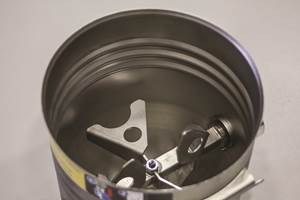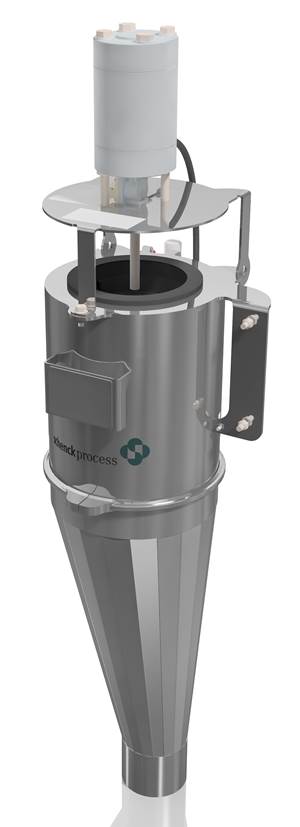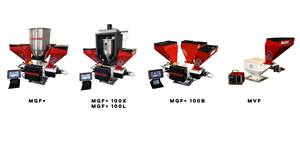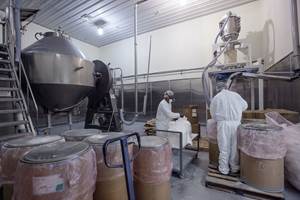Need to Select a Weigh Blender? Here's How Saturn Did It
Comparison testing of batch weigh blenders is becoming a more common practice for injection molders, large and small.
Comparison testing of batch weigh blenders is becoming a more common practice for injection molders, large and small. As makers of gravimetric blenders compete more aggressively, many of them are offering 30-day trials with a money-back, no-questions-asked guarantee. Processors started side-by-side comparison testing of blenders in their shops in the early 1990s, industry sources say, and the practice is growing rapidly, with automotive molders leading the way. One large blender supplier says it participated in 20 such tests last year, up from 12 the year before. Each test involved three or four competing blenders.
These tests necessarily must use readily available, off-the-shelf blender models, which sometimes may not be optimal for the application under consideration. But at least the tests give processors a better idea of what they want from gravimetric blenders.
Shoot-out at Saturn
Three years ago, Saturn Corp. in Spring Hill, Tenn., went through just such a learning curve. Saturn engineers reviewed blender suppliers’ literature and got in touch with eight suppliers, asking them if they could build an eight-component blender and furnish a four-component test model. Five of the eight suppliers said they could build eight-component blenders, but only three were willing to lend a test unit for side-by-side comparison under production conditions. Saturn’s color concentrate supplier, M.A. Hanna Color, Automotive in Norwalk, Ohio, had suggested that Saturn was using too much color on trim parts and should look at gravimetric batch blenders to save money.
At the time, Saturn had 13 injection machines molding interior trim parts that were fed by volumetric auger feeders. “They were state of the art when they were installed 12 years before,” says Steven Schneider, automotive sales manager at Hanna Color. But they weren’t being used optimally. Saturn, like many molders, rarely recalibrated the volumetric feeders for different additive bulk densities when making color changes.
Instead, color-change procedures were designed to be simple in order to minimize operator error, not to minimize color. So each mold had a single color setting, no matter what color was being run. That meant the auger-feed rate was set for the color with the lowest bulk density, thereby ensuring it would feed too much of the other colors. Saturn engineer in charge Becky Schwind says they were loading 4% to as much as 10% color concentrate to get consistent parts with a single setting.
Converting to gravimetric
Reducing color usage was the initial impetus for Saturn’s blender trials, but other factors reinforced the move to gravimetrics. Saturn’s switch to polypropylene interior trim in 1997 created color mixing problems that couldn’t be rectified with the existing volumetric feeders. That change also coincided with Saturn’s urgent need to specify feeders for two new 5000-ton HPM presses, which were on order to make large parts with molded-in color.
The ultimate deciding factor in Saturn’s blender selection turned out not to be equipment accuracy, but simplicity of operation and the blender supplier’s willingness to customize the units. Saturn wanted one blender model to fit all its molded-in color production. That meant fitting 13 existing presses of 2000 and 3150 tons, plus two mammoth new 5000-tonners, whose long cycles permitted them to use the same blender size as a smaller machine.
Tests were run in the summer of ’97 with standard four-component blenders from three suppliers, including Mould-Tek Industries Inc. in Scarborough, Ont. Other suppliers were asked to participate, but declined.
The three blender contestants were installed on Saturn’s 3150-ton Ube presses. One blender ran into trouble almost immediately because of problems with programming the controls. “Sometimes it dropped too much color, sometimes not enough,” Schwind recalls. “I was always being called by operators in the middle of the night.” The supplier says it had sent a unit that was on hand at the time but that wasn’t the right size for the job. The undersized unit was sent back after a week and replaced with a second Mould-Tek blender.
Another competing blender in the trial required operators to input data in grams instead of pounds and ounces, which made the procedure more complicated and prone to error. The supplier of that blender now concedes that it could have been programmed better to meet Saturn’s needs. More importantly, that blender’s control software wasn’t able to dispense one ingredient and then adjust the ratio of the second ingredient to it, while weighing the batch several times. Instead, the blender dispensed two or more ingredients while weighing each once and compensating on the next batch for any over- or undershoot on the previous batch. (That supplier subsequently developed a programming option similar to Mould-Tek’s, allowing precision ratio feeding of two components.)
The choice of Mould-Tek over the other two was not based only on equipment capabilities, but depended as much or more on Mould-Tek’s greater ruggedness and better mechanical design and on its willingness to customize its blender and controls to Saturn’s needs, says Richard Hopkins, the manufacturing engineer at Saturn (now retired) who started the project.
The desired blender configuration evolved from four components to eight. Capacity for four major and four minor ingredients would allow pushbutton color changes without cleaning hoppers. But the new requirements meant configuring standard components into a special layout that was slightly different for each of Saturn’s 13 machines. “The blenders were customized to fit the platform on each press,” recalls Mould-Tek’s U.S. sales manager, Michael Rauch. “We had to measure them all.”
Rauch also invested more time than his competitors in training operators during the trials. He brought a detachable control panel to Saturn to train operators even before the blender arrived. It also didn’t hurt that he recognized machine operators who had transferred to Saturn following G.M. plant closings in Flint, Mich.
Rauch keyed all 17 color formulas for Saturn parts into the blender controls, so that operators could change colors by dialing a single number “Operators could push a button and say, ‘I’m making green,’” Rauch explains. As a result, color changes would be no more complicated than with the volumetric blenders.
Controls on the other two competing blenders were more complicated, says Saturn’s Schwind. Both required operators to input more parameters for color changes.
By July ’99, Saturn had installed 15 eight-component blenders from Mould-Tek. Saturn’s color use now runs at a steady 4% with any combination of virgin resin and regrind, Schwind says. As a result, she adds, “The gravimetric blenders paid for themselves in a month.”
Related Content
Five Quick Steps Toward Better Blending
Rising costs of resins and additives, along with higher demands for quality and use of regrind, place a premium on proficient blending. Here are some steps to get you there.
Read MoreMini Vent Provides Dust Separation in Bin or Feeding Applications
Separates dust from displaced air when a vessel is filled with bulk solids.
Read MoreFlexible Feeder Line Suited for All Processes
New feeder models are said to offer the ultimate in flexibility for injection molding, extrusion, blow molding and extrusion control applications.
Read MoreCut Loading Time Through Direct Charge Blending
Direct charge blender loading, a vacuum-powered automation process, can dramatically improve loading time and reduce material costs. In this article, we address ten common questions to help you determine if the systems are right for your facility.
Read MoreRead Next
How Polymer Melts in Single-Screw Extruders
Understanding how polymer melts in a single-screw extruder could help you optimize your screw design to eliminate defect-causing solid polymer fragments.
Read MoreProcessor Turns to AI to Help Keep Machines Humming
At captive processor McConkey, a new generation of artificial intelligence models, highlighted by ChatGPT, is helping it wade through the shortage of skilled labor and keep its production lines churning out good parts.
Read MoreUnderstanding Melting in Single-Screw Extruders
You can better visualize the melting process by “flipping” the observation point so that the barrel appears to be turning clockwise around a stationary screw.
Read More (2).jpg;maxWidth=970;quality=90)






 (2).jpg;maxWidth=300;quality=90)







 (1).jpg;maxWidth=970;quality=90)